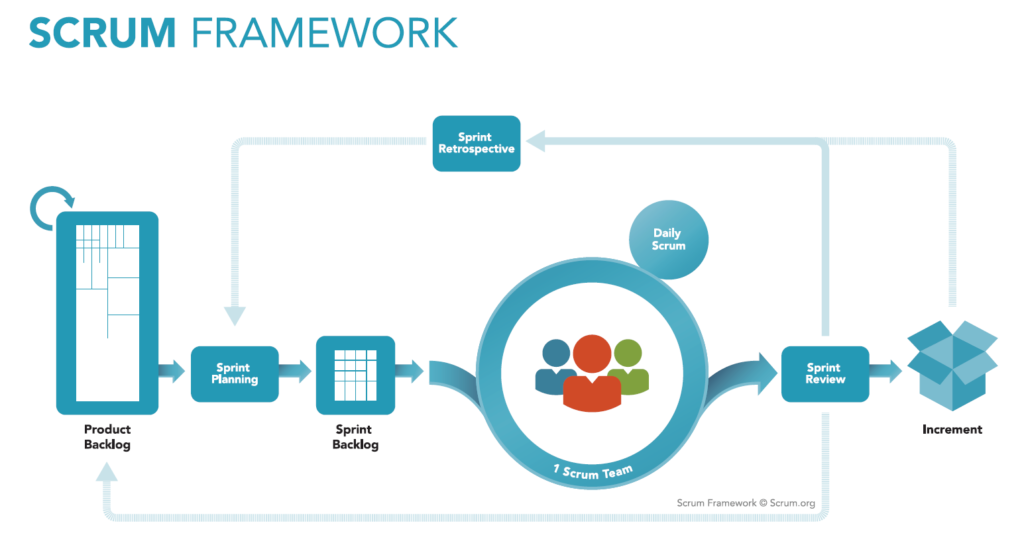The Intelligent Observatory programme has started using the Agile orientated Scrum methodology as the project management framework to complete the work of the core team in the programme. For more info of Scrum read here.
With reference to the figure below, work is completed in iterations called Sprints. During the Sprint Planning event at the start of a sprint iteration, work items (or functionality or user stories) from the Product Backlog is selected for the current Sprint iteration which is approximately 4 weeks duration. At the end of a Sprint, a Sprint Review Meeting is held where the work completed is presented to User and Stakeholders. The team then holds a Sprint Retrospective where they discuss what worked, what didn’t and what should be improved from the last sprint.. The cycle then start again with a Sprint Planning meeting.
The team also conduct scrum meetings two times a week on a Tuesday and Thursday.
The IO backlog can be found here: link. This is an evolving list of work products from high to low-level and is continually refined as new functionality comes online and is tested and feedback received from user or from changes in the external environment. For example, the change to working from home due to the COVID-19 pandemic has meant that functionality facilitating performing observations remotely is being prioritised.
An archive of Sprint Review presentations: link
For info on the work being done during the current Sprint (Sprint Backlog), please contact Stephen Potter.

Note, that the plan is not that all work can be completed this way. This is particularly well suited for the IO’s software orientated work items since it allows delivery of functionality quickly and according to requirements as it is currently understood. When in use, additional requirements can then emerge thereby moving towards a solution better suited to users. For many projects (particularly hardware upgrades) the requirements are fully defined up front and a more conventional waterfall project management approach can be followed. [Aside] There is a move towards applying agile methods for even hardware projects nowadays. Especially now that 3D printing allows rapid prototyping.
